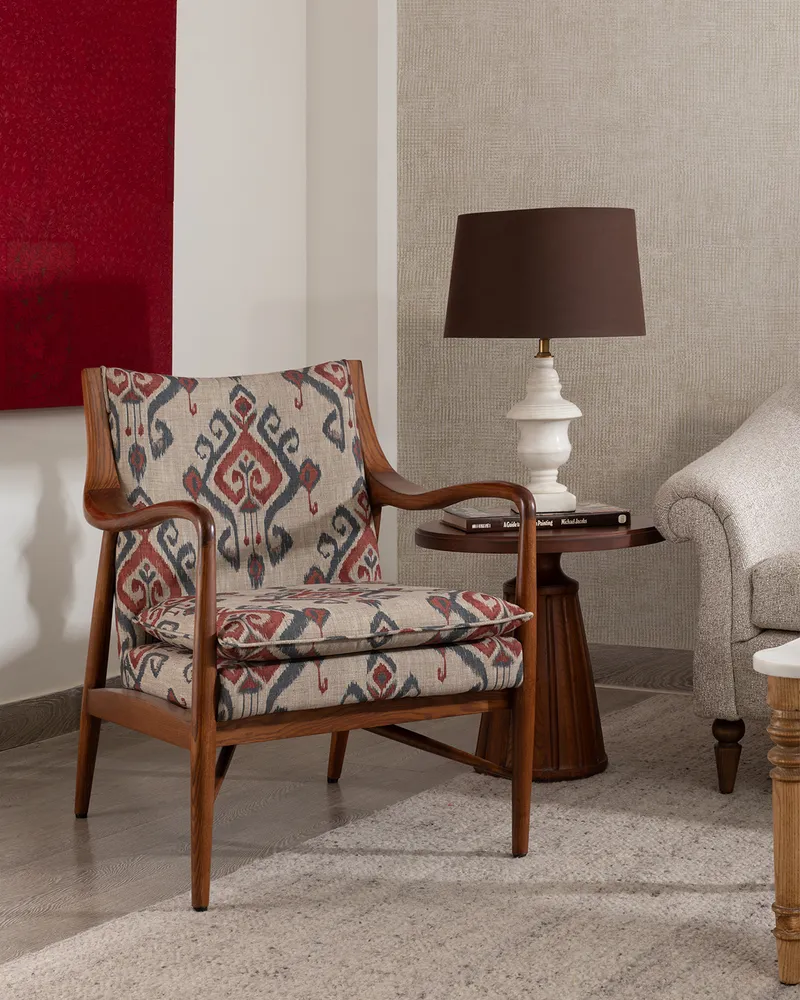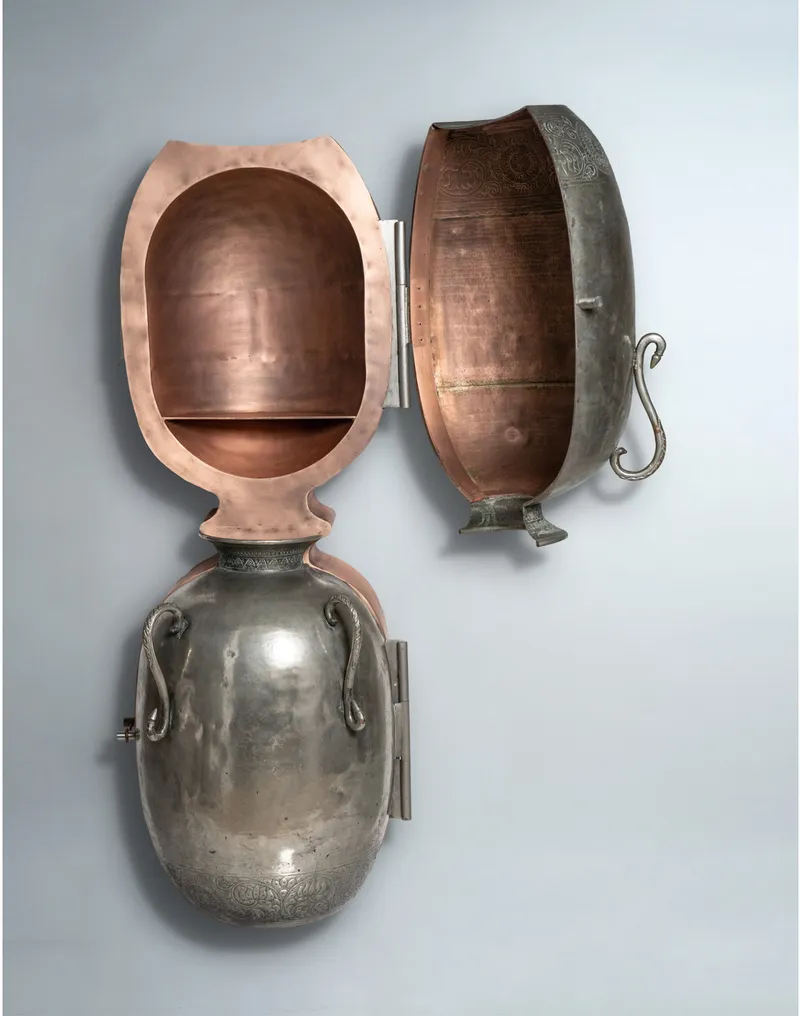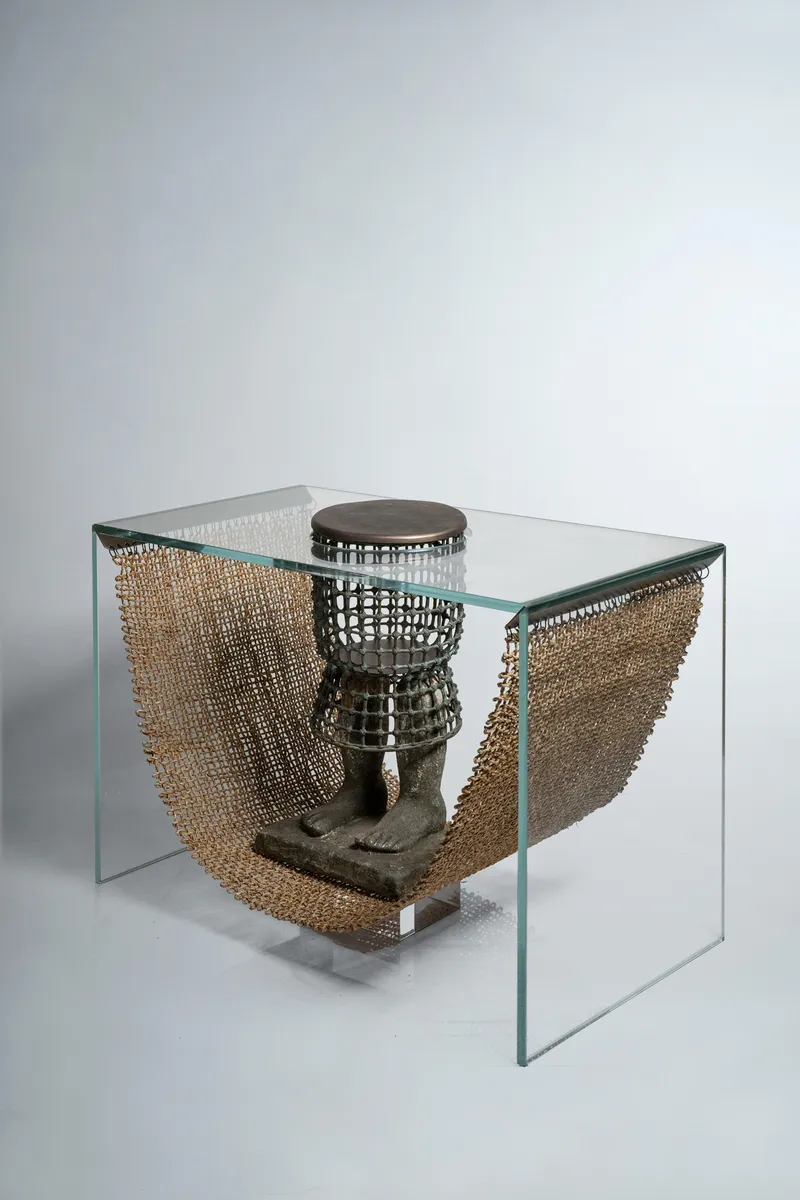The future of design: Indian, inclusive, and sustainable
The design of the future promises to reflect the rich art and heritage of the country, while making space for contemporary voices. Sustainability and inclusivity will also occupy centre-stage.
Until a few years ago, design events in Indian metropolises were far and few between. They were the playground of collectors and curators, with very little space for the curious. However, much has changed of late with prominent platforms like India Design ID offering equal access to all—to immerse themselves in everything creative.
On the first day of the India Design ID 2025, there was palpable excitement in the air. The massive NSIC Exhibition Grounds in Delhi’s Okhla area was teeming with visitors across age groups—from students to art collectors—to catch over 150 Indian and international brands exhibiting luxurious furniture, lighting, furnishing, decor, collectibles and interior solutions.
One of the captivating installations at the fair is designer Mahesh Sharma’s Born to be Free–Nar+Nari, curated by Sunil Sethi Design Alliance, epitomising the balance between freedom and responsibility and representing both masculine and feminine energies.
Equally striking is an installation made in Angelo white marble and Avocado stone from the brand A-Class Marble, which paid tribute to the Preamble of the Indian Constitution through a three-dimensional crossword puzzle. The idea was for visitors to identify words and reflect on their meaning as a citizen.
The installations at the India Design ID are not just impressive–they also raise several questions about the direction in which the design fraternity is headed.
Has the design fraternity become more comfortable with pushing the boundaries to reinforce a meaningful narrative? Or is it still about pure aesthetics?

An Ikat chair on display at India Design ID
Innovation, inclusivity and Indian-ness
It’s hard to define the ‘future of design’ in a singular perspective, as several factors are likely to influence and shape design in the coming years.
Misha Bains, Fair Director and Curator, India Design ID, believes the next decade in India is about looking “inwards” rather than outwards, diving deep into the rich crafts and heritage of the country, and bringing them to a global audience.
“It is going to happen at a regional level rather than a macro level where smaller groups and organisations will lead this change,” she says.

Bramhand Wall Cabinet displayed at India Design ID
Vikram Goyal, who is known for his statement pieces, is also an advocate of Indian art and craft and votes for the interpretation of Indian art in new voices.
“We have such a large plethora of craft to work with in India, probably like no other country. It is very heartening to see this interplay of art, craft, and design and contemporary languages emerging along with new voices,” he says.
As designers experiment and innovate with various subjects and materials, sustainability and inclusivity will occupy centre-stage in the new world.
Jaipur Rugs’ founder Yogesh Chaudhary says, as the design world evolves, the focus is shifting towards creating spaces and products that are not only visually appealing but also environmentally responsible.
The brand is leading the way, through its reuse and recycling of leftover materials. Jaipur Rugs, which has a rich repertoire of over 10,000 designs, also empowers local artisans and promotes sustainable livelihoods.
“The future of design will involve a deep integration of technology, with new tools and digital platforms enhancing the creative process and expanding possibilities for customisation and personalisation,” adds Chaudhary.
Luxury home décor brand Sarita Handa is on the same page. It believes sustainable design practices with eco-friendly materials and efficient design processes have to be adopted along with smart technology to retain the value of the artisan.
“Overall, the luxury home design is moving toward a harmonious blend of comfort, style, and environmental consciousness, catering to modern lifestyles,” says Sarita Handa, the founder of the brand.

Jhoom Console Series N2 displayed at India Design ID
Architect Rooshad Shroff hopes the future involves more bespoke craftsmanship and unique tailormade solutions for a discerning clientele.
“Design should be able to tell a story, providing a narrative not only of a particular concept, but of its creator,” he points out.
Role of design events in shaping trends and narratives
Bains believes India Design ID has played a critical role in bringing Indian design and craftsmanship to the forefront.
“A design week bears the responsibility to mobilise the design community, ensure that all the incredible work happening in our country is brought to limelight and also act as a catalyst for the future generation of designers,” she adds.
Platforms like India Design ID act as a breeding ground for inspiration by curating new perspectives and bringing fresh narratives to the design community.
For instance, the ID Special Project at the ongoing India Design ID event—Transition: Rethinking the Chair—is creating quite a strong impression among the visitors. The chair is seen as more than just a functional object, and has become a symbol of transformation in the exhibit that explores post-pandemic consciousness through design.
Featuring 45 chairs designed by 45 creators, the collection invites people to reimagine the chair as an evolving narrative of aesthetics, craftsmanship, and social responsibility.
The participating designers include Atelier Ashiesh Shah, Design ni Dukaan, Objectry, Gunjan Gupta, and Kohelika Kohli.
“I believe the design week in every country is not only important but imperative for future growth and knowledge,” says Chaudhary of Jaipur Rugs.
For Chaudhary, design showcases serve as an opportunity to highlight not only the designer’s commitment to quality craftsmanship but also to explore how tradition and modernity can coexist in the design world.
“These events allow us to stay ahead of emerging trends, connect with like-minded creators, and engage with a global audience. Design weeks often set the stage for the year’s design movements—whether it’s a shift towards more sustainable materials, innovative color palettes, or new ways to interact with space,” he says.
Kashish Raheja, the principal designer at luxury bespoke furniture brand ANCA, says design events help in networking and collaboration, offering a stage for industry leaders to exchange ideas, set new standards, and inspire future design concepts.
Edited by Swetha Kannan







